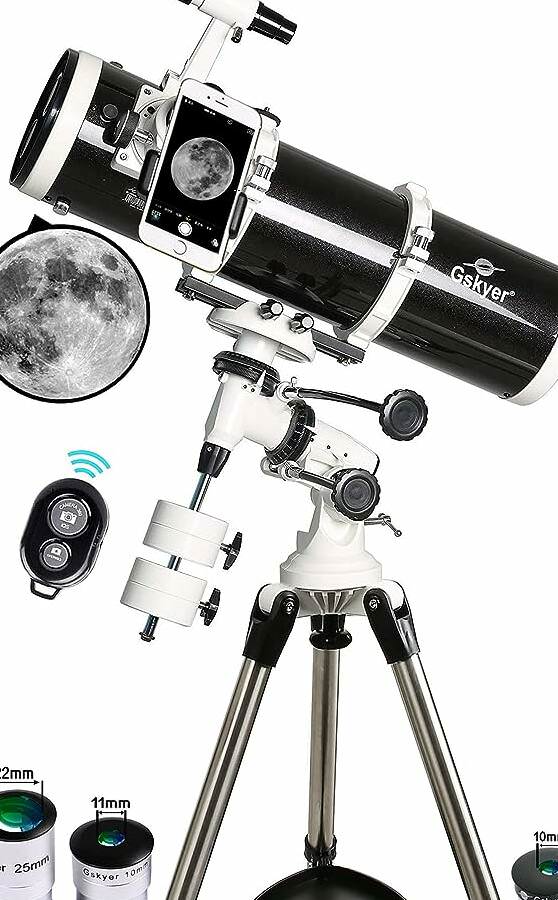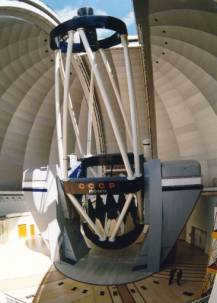When an average individual, lacking profound knowledge in astronomy, acquires a telescope, they typically assume its primary function is magnification. However, this perspective on the device is misguided, as a telescope is primarily designed for the purpose of collecting starlight. Consequently, the more effectively the instrument fulfills this role, the greater the potential for the observer to identify the most remote and faint objects in the celestial sphere.
There are various types of telescopes that differ significantly from each other in terms of their features. It is also important to consider the specific characteristics and unique aspects that define their physical attributes and equipment. It is not uncommon for novice astronomers to feel perplexed when selecting a telescope due to the various types available. However, the type of telescope plays a crucial role in its functionality, as it determines factors such as price range, portability, and the quality of celestial observation. In the following paragraphs, we will provide a brief overview of the main types of telescopes, highlighting their distinctive features and characteristics.
Various kinds of telescopes
Refractors are highly favored by beginner amateur astronomers due to their user-friendly nature, ease of operation, and excellent performance. The design of these optical devices is relatively simple: an objective lens, typically a double-convex lens, collects and focuses light, while a concave or double-concave lens further enhances the light focus. The quality of the lens is crucial as it directly impacts the resulting image quality and the overall cost of the refractor. Although there is no central shielding in the device, some light loss still occurs. This loss is caused by the lens’ ability to absorb light, which is directly proportional to its diameter, as well as by the lenses themselves. To address image quality issues, optical coatings and special types of glass can be utilized. The resulting image orientation is straight, but unfortunately, it is also mirrored or inverted, which can be inconvenient. However, the refractor does offer the option to install a wraparound prism, enabling a more traditional straight image characteristic of telescopes.
Level of training: suitable for both beginners and advanced users
Categories: Galileo, Kepler, achromat, apochromat
Mounting type: entry-level, tabletop, alt-azimuth, equatorial
Objects for observation: double stars, the Moon, planets in the Solar System
Advantages: high reliability, quick thermal stabilization, no need for regular adjustments
Disadvantages: lengthy optical tube, heavy weight, color distortion, high cost
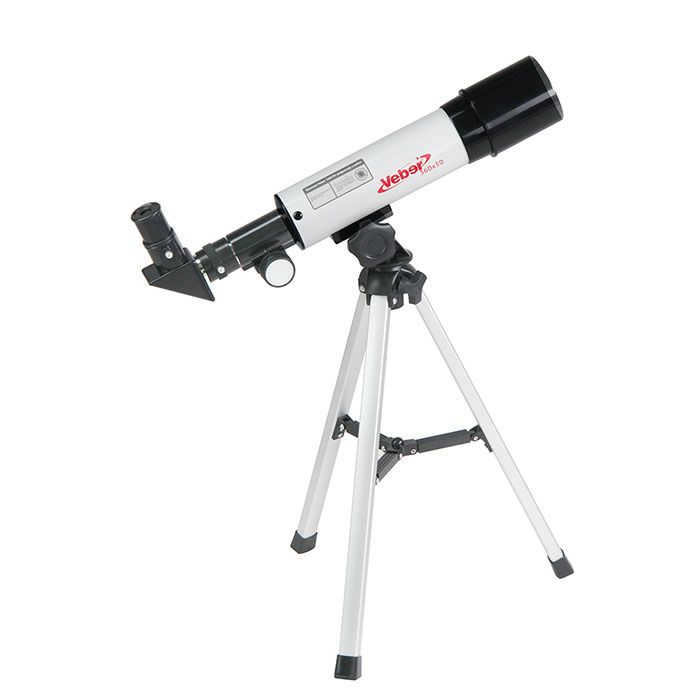
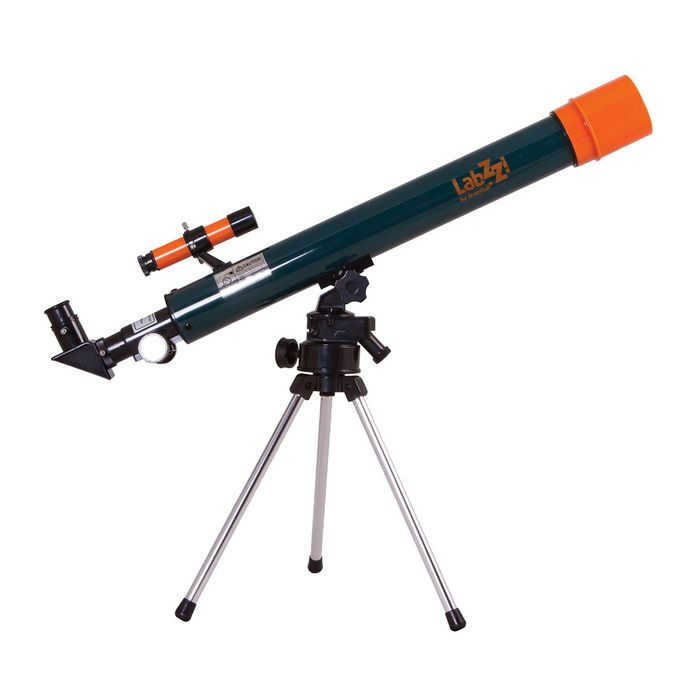
Level of training: suitable for experienced individuals
Types: Newton, Gregory, Cassegrain, Ritchie-Cretien, Korsch, Herschel, Schmidt
Mount type: alt-azimuthal, equatorial
Observation objects: deep space objects such as galaxies, star clusters, and nebulae
Advantages: compact size, moderate cost, no chromatic aberration
Disadvantages: periodic cleaning and adjustment of mirrors required, long thermal stabilization
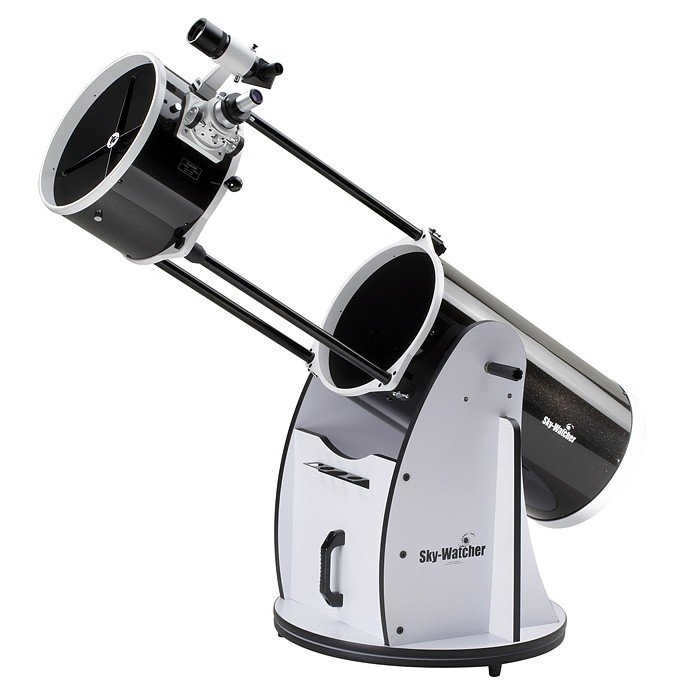
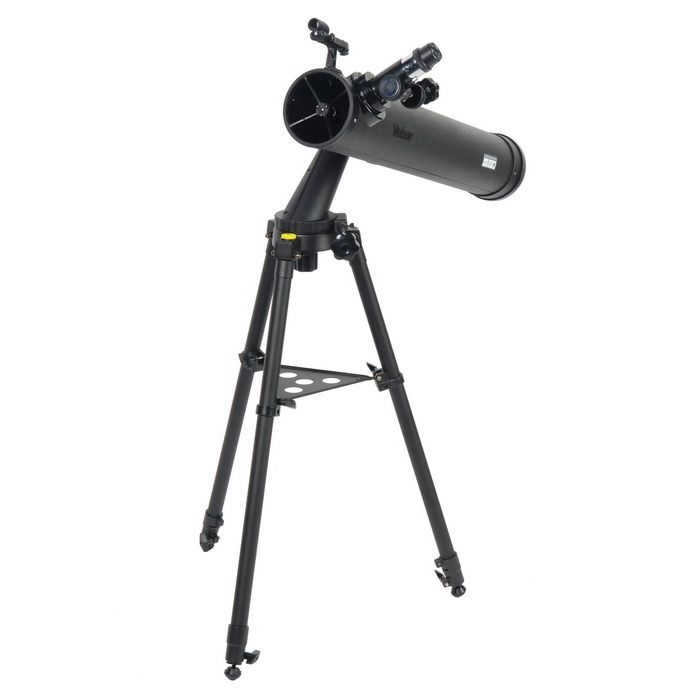
Catadioptric telescopes are a unique combination of refractor and reflector, making them a versatile option among telescopes. They incorporate both lenses and mirrors, making them a popular choice among amateur astronomers. The most commonly used designs for catadioptric telescopes are the Schmidt-Cassegrain and Maksutov-Cassegrain.
When examining the Schmidt-Cassegrain telescope, it is important to note that both the primary and secondary mirrors are spherical in shape. The use of this system can result in noticeable field curvature and coma, which can be corrected with specialized lenses. However, “catadioptrics” offer numerous advantages. For instance, they have shorter tubes and lower mass compared to Newtonian reflectors with the same focal lengths. Additionally, catadioptric telescopes do not have any exposed secondary mirror mounts. The enclosed tube of mirror-lens telescopes eliminates the need for owners to worry about airflow and dust accumulation.
Usually, the main focus of catadioptrics is on comfort and portability. Amateur astronomers have been using small meniscus telescopes with lightweight tubes for a long time to observe the night sky in rural areas. These telescopes are easy to transport in a car due to their compact design and light weight. However, one drawback of mirror-lens telescopes is their limited brightness, which can cause distortion when observing deep space objects.
Level of expertise: suitable for experienced astronomers
Types: Schmidt-Cassegrain, Maksutov-Cassegrain
Mount type: Dobsonian, alt-azimuthal
Objects to observe: Moon, planets in the solar system, stars
Pros: versatility, compact size, minimal aberrations, easy to transport, can be used for astrophotography
Cons: complex construction, high cost, requires 2-3 hours of thermal stabilization
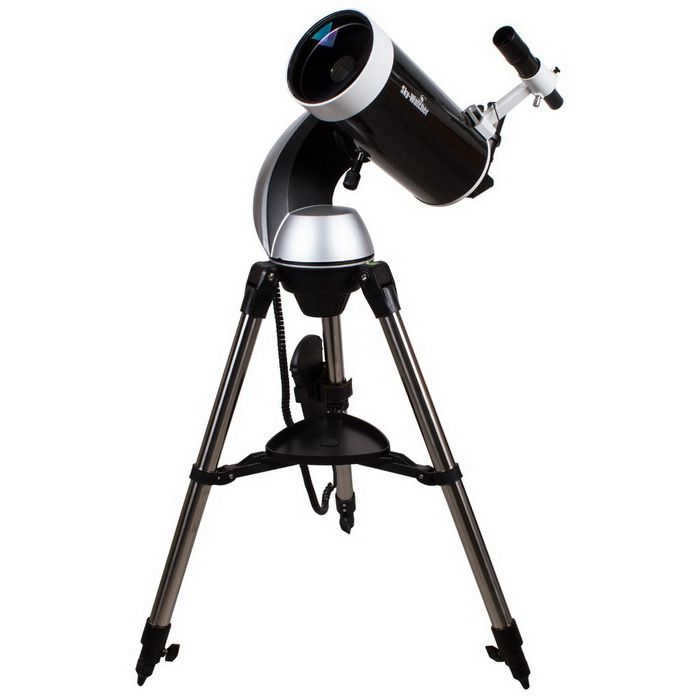
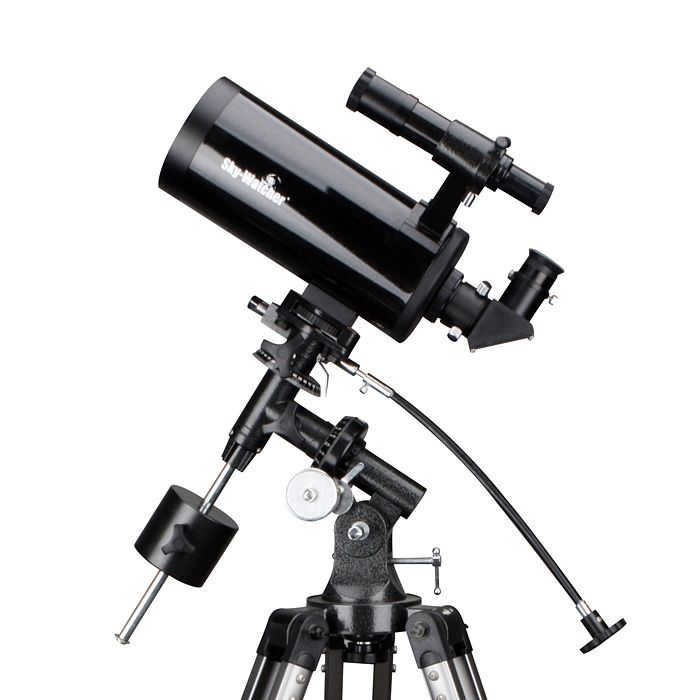
Optical configurations of telescopes
The image quality of the observed object relies heavily on the type of telescope and its components, as well as the optical configuration it is equipped with. In reality, there are numerous optical configurations for telescopes, which can be further categorized into subtypes. Most amateur astronomers tend to prefer classical configurations – let’s delve into them below.
Newton’s optical design is widely recognized as the most popular and widely used scheme in optics. The operating principle of the Newton telescope involves a flat diagonal mirror positioned near the focal point. The main mirror, typically parabolic in shape but occasionally spherical for smaller relative apertures, reflects the light beam at a 45-degree angle, allowing for the capture of images through photography or direct observation with an eyepiece.
Applications: The Newton reflector design is used in both long-focus and short-focus telescopes.
Observation targets: Planets within our solar system.
Advantages: Affordable price, lightweight, wide field of view, and high magnification for detailed observations.
Disadvantages: Potential for spherical aberration, gradual degradation of image quality over time, and the need for periodic realignment.
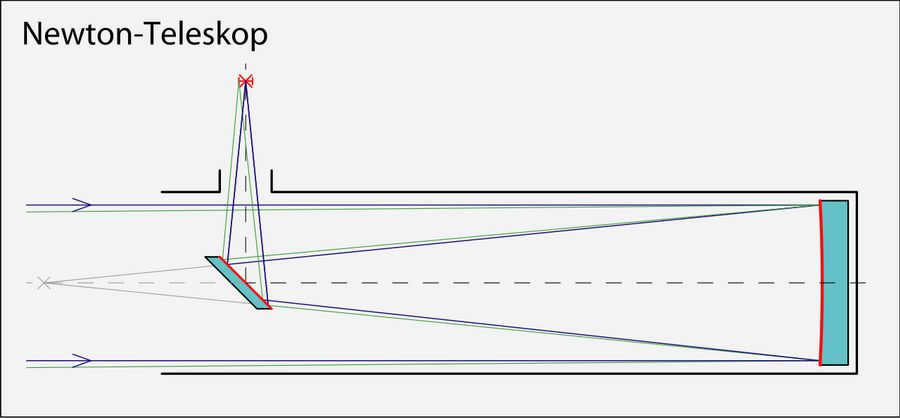
The Galileo Telescope The Galileo Telescope was developed using a unique design, featuring a single objective lens and an eyepiece lens. One of the main advantages of this design is that it produces a terrestrial image, meaning that the picture is not inverted. However, there are some drawbacks to this system, including a very narrow field of view and significant chromatic aberration. Despite these limitations, the Galileo system is well-suited for applications such as theater binoculars and homemade amateur telescopes.
Application : long and short achromats, apochromats.
Objects for viewing : Moon, planets in the solar system, nebulae, comets, galaxies.
Advantages : sealed tube, large focal length, high brightness for observing faint extended objects, long-lasting image quality.
Disadvantages : high cost, potential for “unmolding” and separation of the multi-lens lens over time, heavy weight.
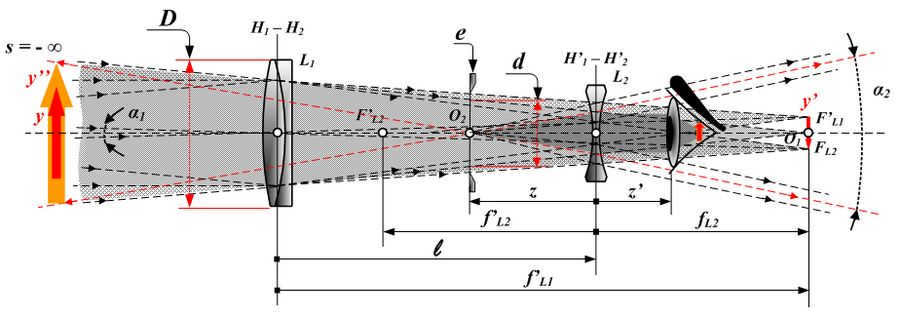
Johannes Kepler once had the intention of enhancing the functionality of his refractor by substituting the scattering lens in the eyepiece with a collecting lens, and unexpectedly invented a novel system that later became known as Kepler’s optical scheme. The replacement of the lenses resulted in an increase in the size of the pupil and field of view, but unfortunately produced an inverted image. The Kepler tube produces an intermediate image, and it is possible to incorporate a measuring scale in the plane of this image. As a result, modern refractors can be considered as successors to the Kepler tube. The primary drawback of this system is its significant chromatic aberration, which can be easily mitigated by employing an achromatic lens.
Application: Refractors
Objects of observation: Moon, planets of the solar system and their satellites, asteroids.
Advantages: wide field of view, high-quality image (in comparison to Galileo’s system), high magnification ratio
Disadvantages: inverted image, significant chromatic aberrations.
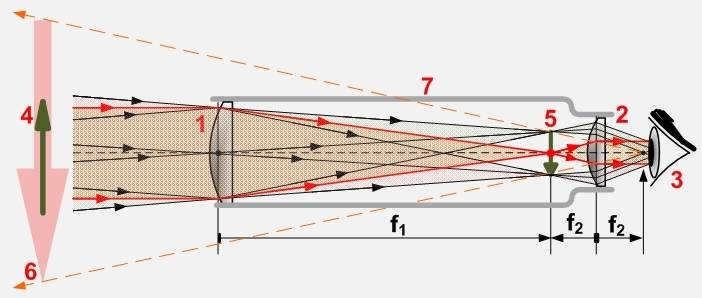
Gregory’s optical design is a type of telescope that utilizes a main concave mirror with a parabolic shape to reflect the path of light rays towards a smaller elliptical mirror. The secondary mirror then redirects the light back to the central aperture where the eyepiece is positioned. Due to the shorter focal length compared to the distance between the mirrors, the resulting image of the observed object appears straight, making this design superior to the Newtonian scheme.
Application : reflector telescopes
Objects of observation : planets within the solar system, terrestrial objects
Advantages : high image magnification, long focal length, ability to capture images of celestial and terrestrial objects
Disadvantages : lengthy tube, constant alignment required, excessive shielding, susceptibility to thermal currents, heavy weight.

How to Use : Reflectors
What to Observe : Planets in the Solar System
Advantages : Central Shielding, High Image Quality
Disadvantages : Issues with Direct Ray Protection, Aberrations on Image Edges
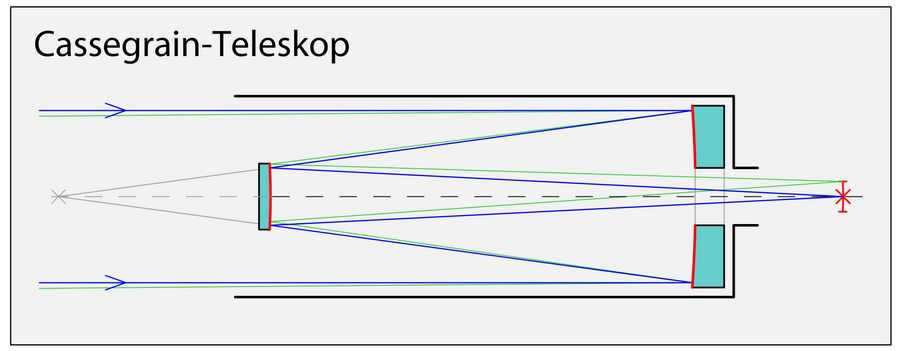
By replacing the primary parabolic mirror with a hyperbolic mirror, we can enhance the design of Cassegrain and achieve a Ritchie-Cretien optical system with a field of view of approximately 4 degrees. This particular system is extensively utilized in the construction of large-scale reflectors, as it possesses a notable advantage of completely eliminating coma, enabling the production of high-quality astrophotography. Similar to the Cassegrain system, the Ritchie-Cretien scheme possesses an equivalent focal length, which significantly surpasses the length of the telescope tube. This scheme proves to be highly advantageous when seeking moderate relative apertures for capturing large-scale images.
Application : reflectors
Objects for studying : Moon, planets of the solar system, galaxies
Advantages : absence of coma of the third order, absence of aberration, ease of use, easy alignment
Disadvantages : need to carefully maintain the centering of mirrors during operation, lack of direct focus due to its placement behind the secondary mirror.
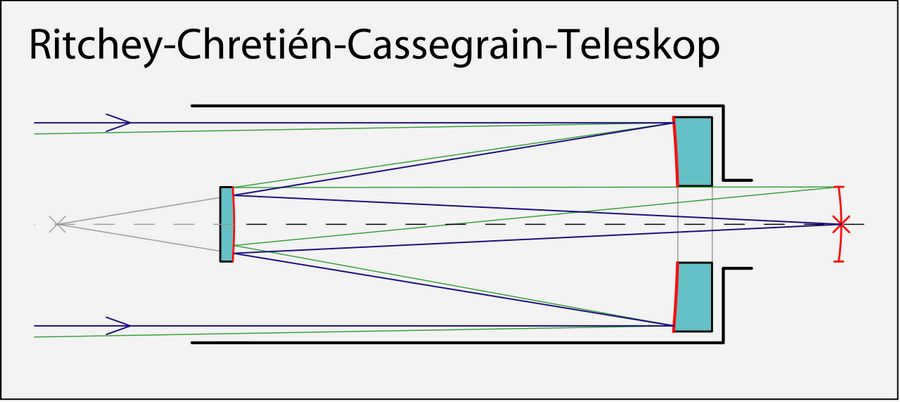
Types of Telescope Mounts
The azimuthal mount allows you to freely adjust the telescope’s position both vertically (up and down) and horizontally along the azimuth. This type of mount gets its name from this ability. An example of an azimuthal mount is a typical photographic tripod. Mounts are generally categorized into different generations: AZ1 lacks a system for fine adjustments, AZ2 includes a fine vertical adjustment, while AZ3 and AZ5 are equipped with knobs for precise vertical and horizontal movements.
Advantages: compact, lightweight, user-friendly design, ready to use out of the box, suitable for beginners.
Disadvantages: lacks the capability to “guide” celestial objects, not upgradeable.
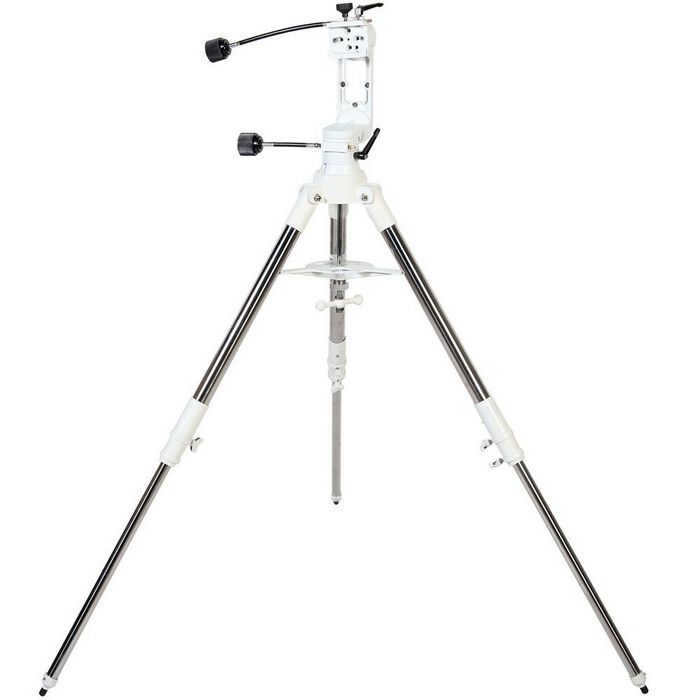
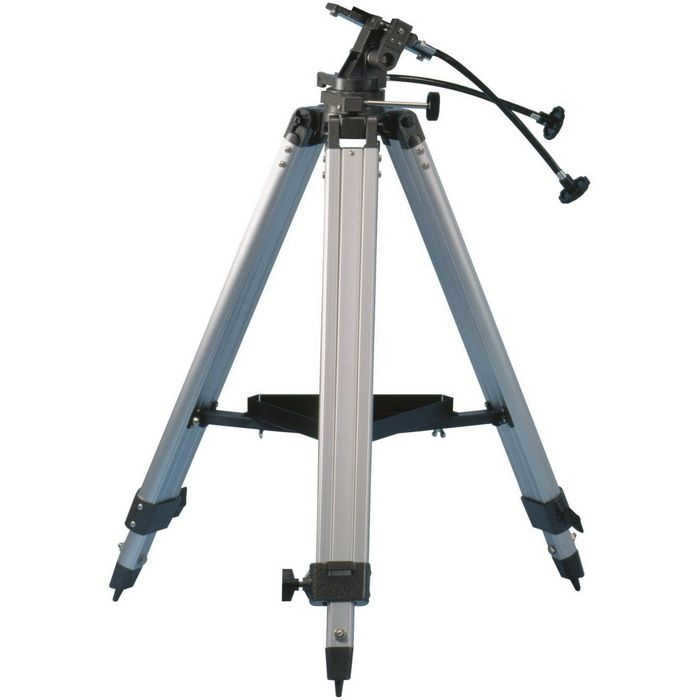
An equatorial mount is a type of mount that has one axis aligned with the Earth’s axis. This equipment allows for easy tracking of celestial objects, enabling high-quality astrophotography. Equatorial mounts are categorized into three generations: EQ1, EQ2, and EQ3. These generations vary in terms of adjustment complexity and accuracy for observations.
Advantages: The telescope offers the possibility to “guide” the object, making it suitable for astrophotography. It also provides good rigidity and stability, and the option to install motors for tracking celestial bodies. Additionally, it can be upgraded to computerization.
Disadvantages: However, there are some drawbacks. The telescope requires pre-tuning and is quite heavy. It is not very suitable for observing terrestrial objects and requires certain skills and knowledge to operate.
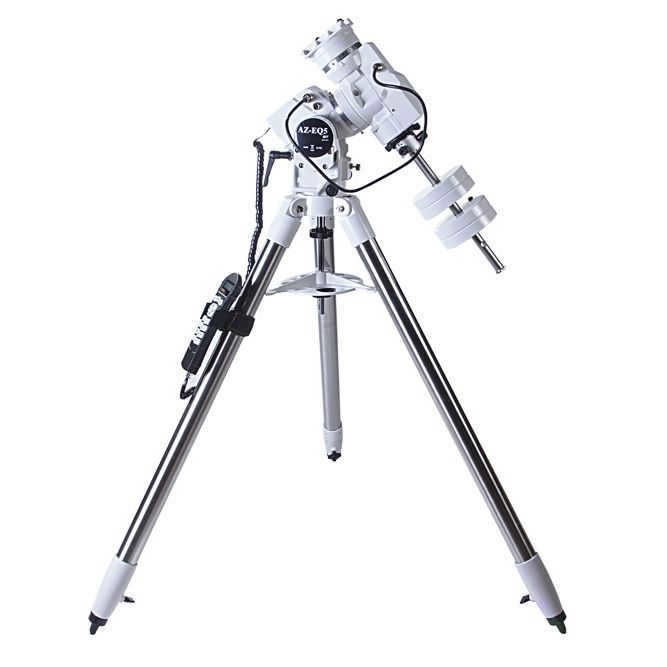
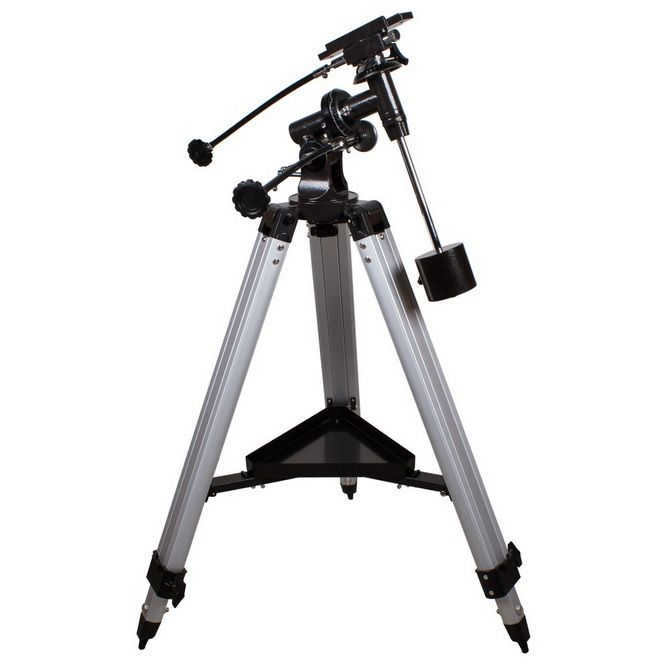
The Dobsonian mount is a type of azimuthal mount specifically designed for reflector telescopes with an aperture larger than 200 mm. Renowned for its stability, simplicity, and quick installation, it allows for smooth and precise vertical and horizontal (azimuth) movement of the telescope tube.
Advantages: Provides exceptional stability for large reflector telescopes, eliminates the need for presetting, and offers automatic pointing options.
Disadvantages: Not well-suited for observing objects on the ground and requires a flat surface for installation.
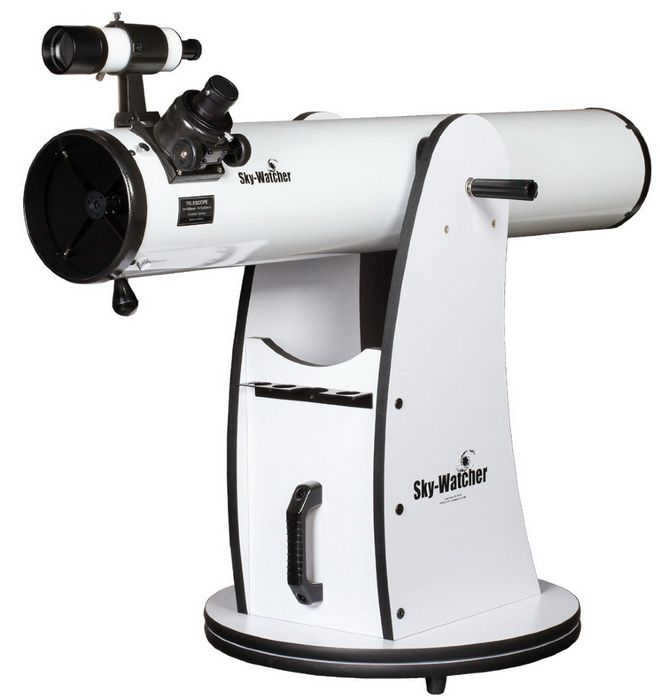
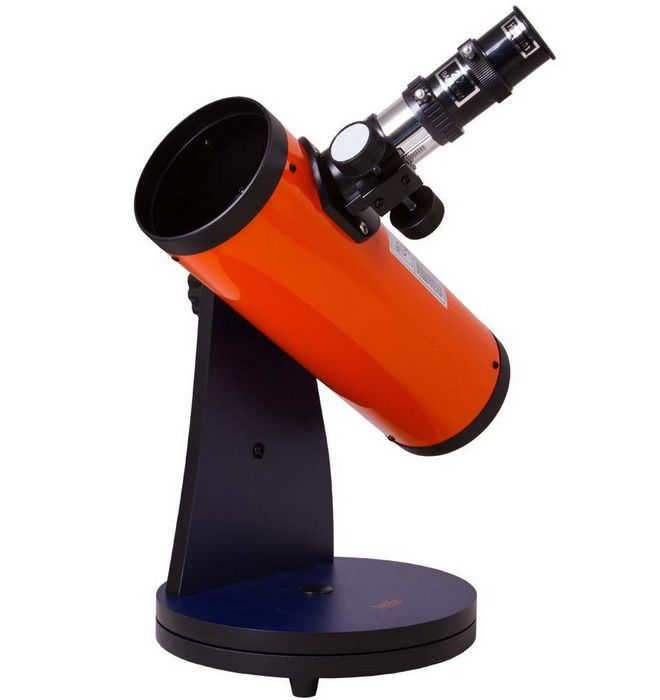
The computerized mount is a great choice for both beginners and experienced astronomers. It is utilized in modern telescopes, incorporating various technologies, ranging from computer control to automated object pointing. However, these devices can be quite expensive.
Advantages: suitable for astrophotography, comes with a database of objects and automatic pointing function, offers automatic object tracking.
Disadvantages: requires presetting before use.
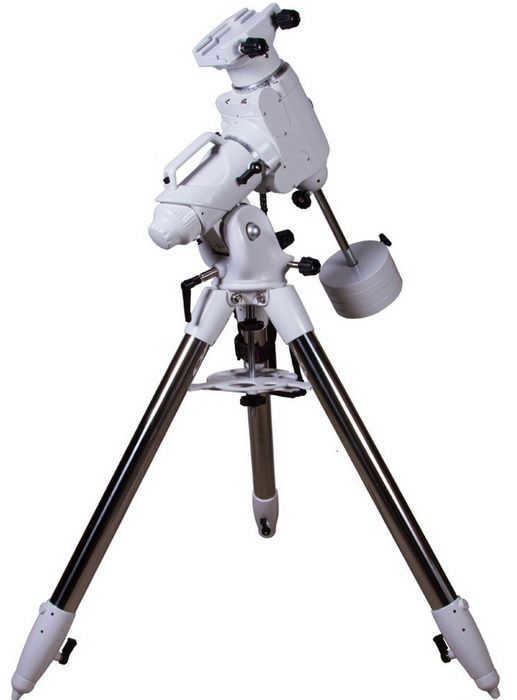
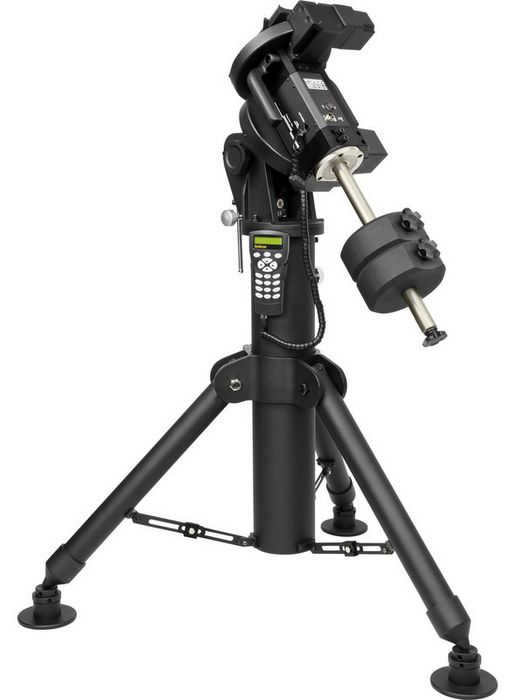
Characteristics of a Telescope
Aperture (Lens Diameter)
The aperture of a telescope refers to the diameter of its objective lens or main mirror. In refractor and catadioptric telescopes, the objective lens collects light, while in reflector telescopes, the main mirror does so. The principle behind aperture is that a larger diameter leads to greater light collection. A telescope with a good aperture allows for clear viewing of object details, excellent magnification, and the ability to observe even the dimmest celestial bodies. Aperture is typically measured in inches or millimeters.
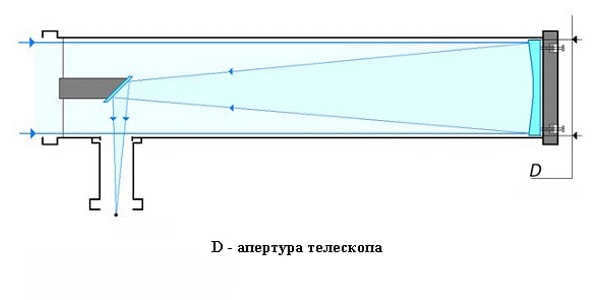
Optical Length
The optical length refers to the measurement from the objective lens to the point at which the rays are refracted or reflected by the lens in a refractor, reflector, or catadioptric telescope and converge. The optical lengths of the telescope and eyepiece are essential in determining the overall magnification of the telescope. Telescopes can be classified into two categories based on their optical lengths: short-focus and long-focus telescopes. For example, a short-focus telescope has a focal length of 7 or less. A short-focus telescope provides a wider field of view, while a long-focus telescope allows for greater magnification.
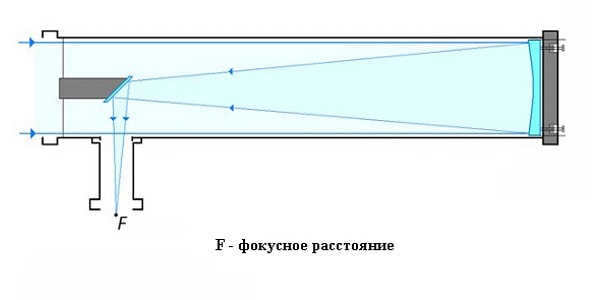
Enhancement
The magnification of a telescope determines how much the object being observed will be enlarged. Amateur astronomers typically use telescopes with magnifications ranging from 40 to 160x. To calculate the magnification of a telescope, you simply divide the focal length of the telescope by the focal length of the eyepiece. When choosing a telescope, it’s important to consider its intended use. Telescopes with lower magnifications are ideal for observing deep space objects, while those with higher magnifications are better suited for brighter objects like the Moon or planets in our solar system. The maximum useful magnification of a telescope, which ensures image quality, can be calculated by multiplying the diameter of the objective lens by two and then multiplying that result by 0.15. This resulting range of values provides the most comfortable viewing experience for the observer, allowing for distortion-free and high-quality images of celestial bodies. While high magnification is useful for observing the Moon and planets, when it comes to observing deep space objects, it’s best to consider the telescope’s aperture.
Type of lumen
The quality of the image is influenced by the type of lumen. To achieve the best picture quality, glass-to-air surfaces are coated with a multi-layer anti-reflective coating.
Stellar magnitude limit
Each star and deep space object has its own brightness, which directly determines its limiting stellar magnitude. The brighter the celestial body, the lower its limiting stellar magnitude.
Dimensions of a Telescope
A telescope’s dimensions refer to its size and specifications. For instance, the focal length of a refractor and its capabilities are determined by the length of its tube. The significant weight of the telescope necessitates a specialized mount that can properly balance it, and it also adds complexity to its transportation.
Optical Aberrations
When operating a telescope under unfavorable conditions, where the temperature of the device does not match the surrounding temperature, as well as due to the characteristics of the optical system, distortions can occur – imperfections in the image of the observed object. These distortions can be rectified by using additional equipment. For instance, if a refractor displays colored halos around bright objects, it may be necessary to purchase a specialized corrective lens to address the issue. In some cases, reflector telescopes with short focal lengths may produce elongated images resembling comets or pears. In such situations, experienced amateur astronomers often opt for a coma corrector, which can be installed in the telescope’s focuser.
Thermal Stabilization
Prior to commencing work, it is important to ensure that large refractors and catadioptric telescopes are brought to the same temperature as their surroundings. The time required for temperature equilibration varies depending on the size and mass of the lens: the larger these values, the longer the telescope will take to thermally stabilize. This phenomenon can be observed when taking the telescope outdoors in cold weather: because the equipment is warmer than the surrounding air, the image in the lens begins to tremble due to the movement of the air. Conversely, if the telescope is colder than the ambient temperature, it may experience unwanted condensation, resulting in a foggy appearance and a blurred image of the object.
Alignment
Right after purchasing a telescope, especially a reflector, every novice astronomer encounters a phenomenon called alignment. Alignment is the process of adjusting the optical device to achieve optimal quality. Technically, alignment involves giving the telescope’s mirror the necessary angled position. The user’s manual that comes with your telescope provides detailed instructions on how to align it.
Our online store offers telescopes for all skill levels, with various characteristics and features. Our managers are available to provide guidance and assist you with placing an order.
The reflector telescope is widely utilized by astronomers in the present day. It employs a primary mirror to gather and concentrate light, while another mirror reflects this light back to the observer. Nevertheless, with numerous reflector telescopes available on the market nowadays, making a decision can prove challenging.
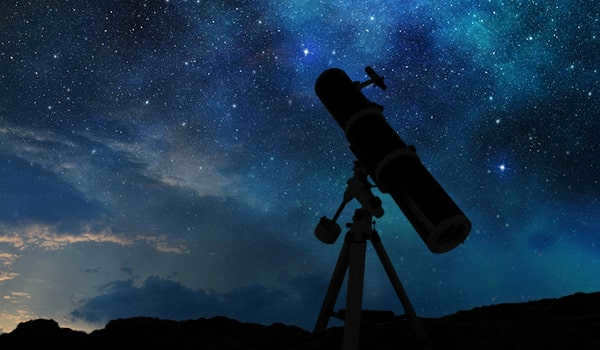
We have conducted extensive reviews of numerous devices in order to assist you in narrowing down your options. Today, we are pleased to present detailed information about the ten models that we found to be the most impressive.
How to Select the Perfect Reflector?
Reflecting telescopes, also known as Newtonian reflectors, are excellent tools for amateur astronomers due to their favorable aperture-to-price ratio. They are versatile and can be utilized for observing celestial bodies such as the Moon, planets, and even deep sky objects. However, it is important to note that they require slightly more maintenance compared to refractors, as occasional collimation (mirror alignment) is necessary. The open telescope tube also means that the mirrors can become damaged or dirty over time. They can be cleaned or, alternatively, you may opt to consult a professional after a few years. Consequently, if you are selecting a telescope for the first time, it is crucial to carefully consider your specific needs.
There are a number of additional factors to consider:
- Aperture-reflector telescopes are the largest option for astronomy enthusiasts. If you are solely using the instrument for visual observation, this is the most critical aspect for optimal performance. A larger aperture will provide more light, greater contrast, and enhanced detail that is visible.
- Focal length – the greater the focal length of your instrument, the higher the level of magnification and the sharper the view.
- Field of view – this depends on the eyepieces you utilize. The apparent field of view and focal length of the eyepieces will determine the true field of view of the telescope.
- Mounting – Dobson telescopes utilize box arms, which are inexpensive yet highly practical. If you opt for a smaller reflector with an equatorial mount, you have the choice between a manual or motorized mount.
- When purchasing a larger telescope, one must consider its portability and weight. While these factors do not directly impact viewing quality, they can influence your motivation to actually use the telescope. That’s why smaller telescopes often come at a higher price of 20-30%.

Personally, I am a fan of reflector telescopes. They are simple to set up and use, and when paired with a Dobson mount, they can be ready for use within minutes.
Illustration of a reflector telescope
This particular type of instrument utilizes mirrors to direct the light gathered by the telescope into an eyepiece located on the side near the front. It was this design, created by Isaac Newton, that became known as the Newtonian Reflector.
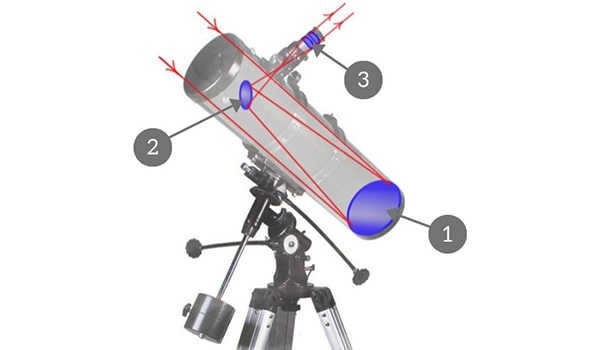
1) The primary mirror is used in reflectors. 2) Reflectors also have a secondary mirror. 3) Another component of reflectors is the correcting lens.
What can you see with a reflector telescope?
Reflectors are versatile and can be used to observe a wide range of celestial objects. You can start by observing the moon and its craters. However, it is important to note that if your reflector telescope has an aperture larger than 5 or 6 inches, it is recommended to use a stronger neutral filter to reduce the brightness of the moonlight, as excessive brightness can be bothersome. When observing planets, it is advisable to use neutral density filters, especially if your telescope has an aperture larger than 14 inches.
Looking at planets through a reflector is a great experience, especially because reflectors don’t have chromatic aberration. If you do happen to notice any chromatic aberration, it could be due to a low-quality eyepiece or atmospheric conditions near the horizon. Reflectors are also excellent for observing double stars and star clusters, especially with longer focal length instruments.
Reflectors are specifically designed for deep space objects (DSOs) like nebulae, galaxies, star clusters, and comets.
While reflectors with a motorized equatorial mount can be used for astrophotography, there may be noticeable diffraction spikes caused by the spider holding the secondary mirror. We recommend using a refractor for astrophotography as it is the better choice.
The primary benefit of mirrors is their cost-effectiveness compared to lenses, making them a more affordable option to buy.
Another advantage is that reflectors have a high amperage, which enables clear observations of celestial objects like galaxies, star clusters, and nebulae.
However, it should be noted that reflectors are not the most user-friendly telescopes for beginners. To optimize their performance, one must acquire a significant amount of knowledge and be willing to perform maintenance tasks such as cleaning and adjusting the mirrors.
Top 10 Reflecting Telescopes – 2021 Review
When it comes to telescopes, there are many different types to choose from. However, if you’re interested in astronomy, a reflecting telescope is the way to go. These telescopes use mirrors to collect and focus light, making them perfect for observing celestial objects. The mirrors in reflecting telescopes are typically parabolic in shape, which allows them to focus parallel light rays into a single point. Since light from celestial objects reaches Earth as parallel rays due to their distance, a reflecting telescope is ideal for observing them.
Reflecting telescopes are not just for professional astronomers. In fact, many amateur astronomers prefer them because of their versatility and affordability. If you’re serious about astronomy, even as a beginner, it’s worth investing in a good reflecting telescope. To help you make the right choice, we’ve put together a list of the top 10 reflecting telescopes available in 2021.
The SpaceProbe II, a compact 76mm reflector telescope equipped with 76mm optics and an equatorial mount, is an excellent option for individuals fascinated by the wonders of space and stars. With its ability to capture a significant amount of light from the celestial sphere, the SpaceProbe II offers remarkable luminosity and intricate perspectives for those interested in astronomical observations.
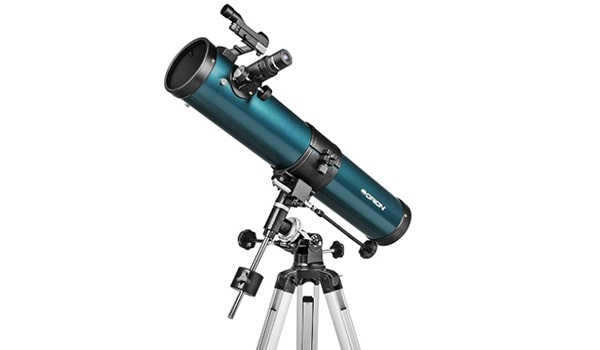
Specifications:
– Aperture: 76 mm
– Focal length: 700 mm
– Focal ratio: f / 9.2
– Weight: 5.9 kg
– Focuser: 1.25-inch rack-and-pinion focuser
– Warranty: 1 year
– Additional features: Kellner Explorer II 25mm and 10mm eyepieces, EZ Finder II mirror sight, Altazimuth tripod with adjustable height, moon map
This telescope is an excellent choice for beginners and is sure to be a hit with the whole family. It is lightweight, easy to set up, and very affordable!
With its 76mm aperture and 700mm focal length, this telescope provides stunning views of the moon, planets, and even some bright nebulae and star clusters.
It comes with a sturdy adjustable aluminum tripod and the EQ-1B equatorial mount, which allows for smooth movement in both the altitude (up/down) and azimuth (left/right) axes of motion.
Orion StarBlast II 4.5 EQ Telescope: A Perfect Choice for Families
When it comes to finding a new hobby that the whole family can enjoy, the Orion StarBlast II 4.5 EQ Equatorial Reflector Telescope is an excellent option. This telescope is not only affordably priced but also offers more than just a basic experience, making it suitable for beginners and advanced users alike. With its durable construction and powerful features, this telescope is built to last and provide years of enjoyment for people of all ages.
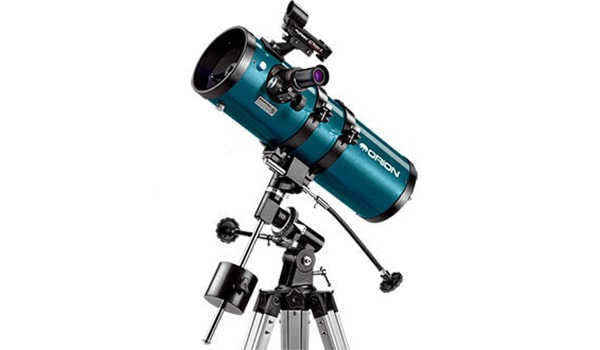
Specifications:
Aperture: 114 mm
Focal length: 450 mm
Focal ratio: f / 4
Weight: 10.4 kg
Focuser: rack and pinion
Warranty: 1 year
Additional features: 2 eyepieces – 25mm and 10mm Sirius Plossl, EZ Finder with red dot.
The StarBlast II telescope is equipped with high-quality optics that allow you to observe various celestial objects. You can explore the phases of Mercury and Venus, as well as observe dark albedo spots and ice caps on Mars. Jupiter’s cloud belts, the Great Red Spot, and its four large moons are also visible. Saturn’s magnificent rings, Cassini’s slit, the planet’s cloud belts, and several of its satellites can be seen with this telescope. Additionally, Uranus and Neptune appear as small turquoise and azure dots.
Orion Astro View 6
The Astro View 6 boasts an impressive 6-inch aperture, making it ideal for capturing ample amounts of light and providing excellent visibility of faint celestial objects.
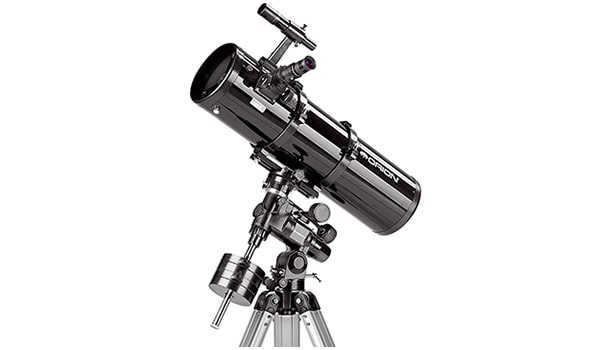
Specifications:
Aperture: 150mm
Focal length: 750 mm
Focal Ratio: f / 5
Weight: 18 kg
Focuser: 1.25″ rack-and-pinion
Warranty: 1 year
Additional features: Sirius Plossl 1.25″ 25mm and 10mm eyepieces with 30X and 75X magnification respectively, 6X30 finder, collimation cap and free Starry Night software
The AstroView telescope is an excellent choice for observing deep space objects. With its large 150mm mirror, it provides stunning views of planets, detailed lunar features, distant galaxies, and ethereal nebulae.
If you have an interest in astrophotography, you may find this unit to be disappointing. While it is capable of basic astrophotography, adding the existing motor drive system and a more powerful eyepiece can make it more suitable for capturing celestial objects. However, there are numerous superior options available on the market for astrophotography, so we recommend considering another unit.
The mirror in this unit is parabolic, providing flawless and undistorted images of even distant objects.
With a focal length of 750 mm, this unit allows for capturing a large number of bright and sharp images.
Orion Sky Quest XT8 Plus
The Orion Sky Quest XT8 Plus is an exquisite device featuring a captivating metallic blue optical tube. Equipped with a mirror coating that boasts enhanced reflectivity, this instrument offers superior performance. Users of all skill levels will delight in the exceptionally vivid and precise images it provides.

Aperture: 203 mm
Focal length: 1200 mm
Focal ratio: f / 5.9
Weight: 19 kg
Focuser: rack and pinion
Warranty: 1 year
Additional features: 2-inch DeepView 28mm eyepiece, 1.25-inch Plossl 10mm eyepiece, 2x 1.25-inch Barlow objective, EX Finder II reflex sight, solar filter, red dot finder, collimation cap, and Starry Night software, still includes a foldable DeepMap 600 star map
The Orion Sky Quest XT8 Plus stands out as the ultimate choice for serious astronomers venturing into the depths of the universe. With its impressive 8-inch aperture, this reflector telescope captures stunning and detailed images of lunar craters, valleys, mountains, and even the majestic rings of Saturn. Not to mention, it allows you to explore mesmerizing star clusters and nebulae, unlocking the secrets of the cosmos.
The Sky Quest XT8 PLUS base from Dobsonian has a sleek design and has been upgraded to be more portable than its XT8 Classic counterpart. The base features weight-saving cutouts that not only look great but also help in making the unit more portable. The XT8 PLUS is a modernized version of the XT8 Classic and comes with a reasonable price tag. It is fully equipped with a range of useful accessories.
The balance of the Dobson base is exceptional, ensuring that the telescope body does not wobble up and down unintentionally.
Orion Sky Quest XX 12i Intelli Scope
The XX12i is renowned for its exceptional performance and extensive features. While it may be relatively heavy, it is not recommended for beginners due to its complexity. However, intermediate level astronomers seeking a manageable yet powerful telescope will undoubtedly be impressed.
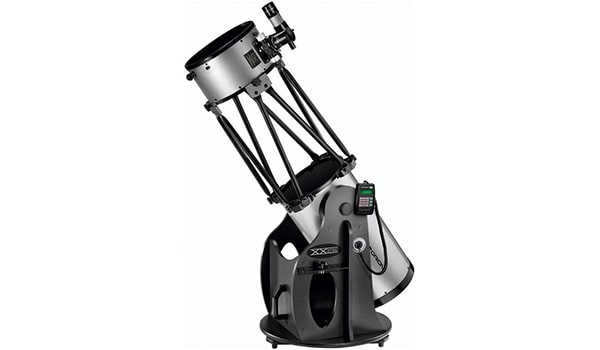
The telescope has an aperture of 305mm, a focal length of 1500 mm, and a focal ratio of f / 5. It weighs 38 kg and is equipped with a Crayford focuser. The telescope comes with a 2″ 35mm deep-sight eyepiece and a 1.25″ 10mm plossl eyepiece, a 9 x 50 finder, a 2″ Crayford focuser, a gas pedal cooling fan, an eyepiece stand, a collimation cap, and Starry Night software. It also comes with a 1-year warranty.
Geo Safari Omega
The Geo Safari Omega is an impressive 700-millimeter reflector telescope that offers a unique and detailed perspective of the vastness of deep space. With this exceptional instrument, users have the opportunity to observe and study constellations, star clusters, and even the captivating beauty of the Orion Nebula. Whether you are a seasoned astronomer or a beginner, this telescope is designed to be user-friendly, making it the perfect choice for the whole family to enjoy and explore the wonders of the universe together.
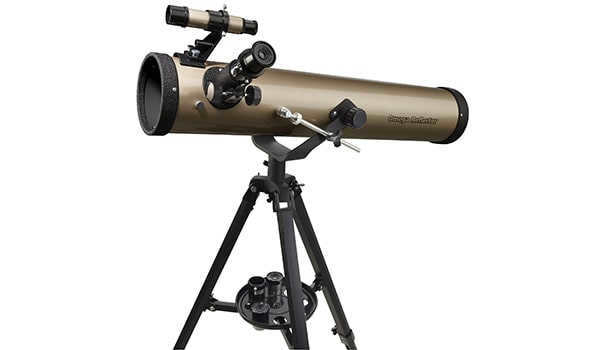
The telescope has an aperture of 76 mm, a focal length of 700 mm, and a focal ratio of f/9.2. It weighs 4.85 kg and features a rack and pinion focuser. The telescope comes with a 1-year warranty and additional features include a heavy-duty full-size adjustable tripod with an accessory tray, standard 1 1/4 inch interchangeable eyepieces, a 3x Barlow lens, and an image corrector.
Explore the wonders of the universe with the incredible Omega reflector from Educational Insights. This powerful telescope allows curious astronomers to observe everything from lunar craters to the breathtaking rings of Saturn, as well as deep space phenomena like star clusters and nebulae. Equipped with a high-quality 60mm achromatic lens, the Omega reflector offers exceptional magnification ranging from 30x to 300x. Its three all-glass eyepieces deliver stunningly clear and bright images. The reflector also includes a deluxe telescopic tripod, ensuring steady and stable viewing of the magnificent sights in the starry sky.
Sky-Watcher FlexTube 300 SynScan Dobsonian
Discover the wonders of the night sky with the Sky-Watcher FlexTube 300. This state-of-the-art telescope is perfect for stargazers of all levels, allowing you to effortlessly locate and observe planets, nebulae, star clusters, galaxies, and other celestial treasures. The innovative folding tube design sets this Dobsonian telescope apart from the rest, offering unparalleled portability and exceptional performance.
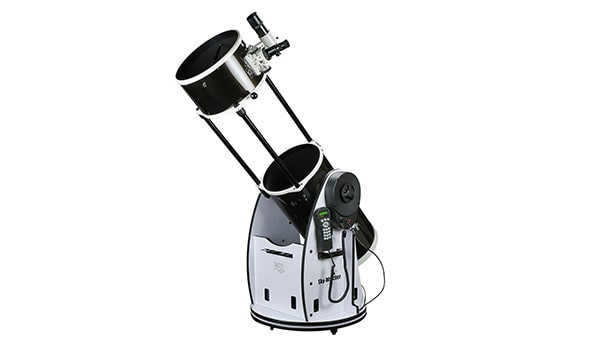
Aperture: 305 mm
Focal length: 1500 mm
Focal ratio: f / 4.9
Weight: 38 kg
Focuser: 2 " Crayford
Warranty: 1 year
Additional features: 2" Crayford-type focuser with 1 1/4" adapter, two ultra-wide-angle eyepieces (25mm and 10mm) and an 8×50 right angle finder
The Sky-Watcher FlexTube 300 SynScan Dobsonian is a unique telescope that offers a combination of innovative design and advanced technology. With a 305 mm aperture and a 1500 mm focal length, this telescope provides exceptional image quality and clarity. Its f/4.9 focal ratio allows for a wide field of view, making it ideal for observing celestial objects. Weighing only 38 kg, it is lightweight and portable, making it easy to transport and set up. The telescope features a 2″ Crayford focuser, which provides smooth and precise focusing. It also comes with a 1 1/4″ adapter, allowing you to use a variety of eyepieces. Additionally, it includes two ultra-wide-angle eyepieces (25mm and 10mm) and an 8×50 right angle finder, enhancing your viewing experience. The telescope comes with a 1-year warranty, ensuring your satisfaction and peace of mind. The Sky-Watcher FlexTube 300 SynScan Dobsonian is equipped with a computerized GoTo mount, which allows for easy and accurate navigation of the night sky. The SynScan handheld controller enables you to effortlessly point the telescope at specific objects or explore the cosmos with just the touch of a button. Experience the wonders of the universe with the Sky-Watcher FlexTube 300 SynScan Dobsonian!
Many astronomers desire the impressive aperture offered by the Dobson telescope, but some users may be put off by the absence of computerized GoTo features. Sky-Watcher addresses this issue by incorporating motors into the traditional Dobson base, providing astronomers with the benefits of a computerized GoTo system. To make adjustments quick and easy, Sky-Watcher’s exclusive SynScan Sky-Watcher hand controller offers two simple alignment methods: Bright Star or Two Star. With the help of SynScan Sky-Watcher’s unique technology, users now have the ability to effortlessly access over 42,000+ objects in the sky with just a touch of a button.
Meade Polaris 130 EQ
The Meade Polaris 130 EQ is an unmistakable bright blue reflector telescope that not only catches the eye but also delivers exceptional performance. It is the perfect tool for aspiring astronomers, providing everything they need, including an informative DVD and software.
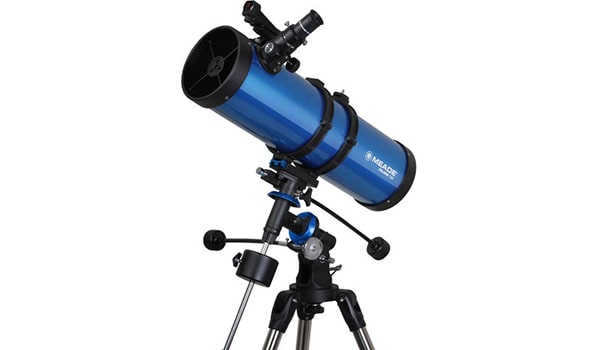
The telescope has an aperture of 130mm, a focal length of 650mm, and a focal ratio of f/5. It weighs 12.2 kg and is equipped with a Crayford focuser. The telescope comes with a 1-year warranty. Additionally, it includes a 2x Barlow lens and 3 eyepieces, which allow for low (26mm), medium (9mm), and high (6.3mm) magnification. When used with the 2x Barlow, the respective magnifications can be doubled to 50x, 144x, and 206x.
Celestron Astro Master 130 EQ
If you are in search of a telescope that can be used for both observing the Earth and studying the stars, then the AstroMaster series is the perfect option for you. The Celestron AstroMaster 130 EQ is particularly well-suited for beginners, as it is simple to set up and operate, allowing you to begin your exploration of the night sky immediately.
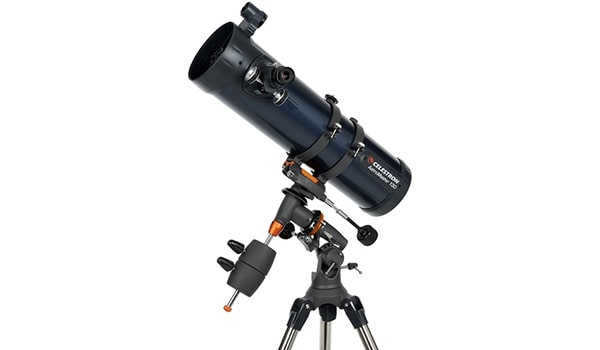
Specifications:
Aperture: 130mm
Focal length: 650 mm
Focal Ratio: f / 5
Weight: 10.89 kg
Focuser: rack and pinion
Warranty: 3 years
Additional features: comes with tripod and The Sky planetarium software with a database of 10,000 objects, 2 eyepieces (20mm with 45x magnification and 10 with 90x magnification).
When it comes to its magnification capabilities, you can expect nothing but satisfaction. The 130mm aperture is strong enough to provide clear and vivid views of distant galaxies and cloud nebulae. With this telescope, you can observe all the planets in our solar system and even some deep space objects like galaxies and nebulae.
Celestron Nex Star 130 SLT
If you are a dedicated astronomer, then the Celestron Nex Star 130 SLT is a must-have. This remarkable reflective telescope is fully computerized, making it an ideal choice for both beginners and advanced users. However, even seasoned astronomers will find this instrument to be a valuable addition to their collection.
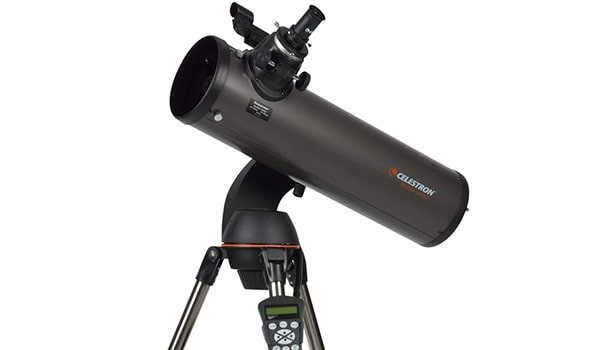
Specifications:
Aperture: 130mm
Focal length: 650 mm
Focal ratio: f / 5
Weight: 8.16 kg
Focuser: rack and pinion
Warranty: 2 years
Additional features: computerized GoTo mount, StarPointer red dot finder and 2 eyepieces (25 mm and 9 mm)
The computerized Star Locator Tool (SLT) provides a vast selection of over 40000 stars, galaxies, nebulae, and other celestial bodies for users to explore.
This reflector telescope is equipped with two eyepieces. The larger 25 mm eyepiece is ideal for observing galaxies and can also be used with the lunar filter to observe the Moon. The smaller 9 mm eyepiece offers more detailed views of the planets.
Featuring a compact and portable design, this telescope is easy to use and suitable for both adults and children, providing an exceptional stargazing experience.
Refractor Telescope
A refractor telescope, in simple terms, is a telescope that utilizes a spherical or parabolic mirror rather than a lens to concentrate light in the eyepiece.
Reflecting Surface
The primary component of a refractor telescope is the reflecting surface, which is positioned at the rear of the tube and gathers light. This reflecting surface is constructed from specialized optical glass and is coated with a protective layer, making it crucial to avoid touching it.
This reflecting surface possesses two primary characteristics:
1. Aperture refers to the diameter of the reflecting surface. For instance, mine measures 76 mm, which is relatively small.
2. Focal length determines the point at which the reflected light from the mirror converges. In my case, it measures 700 mm.
Focusing Mechanism
The focusing mechanism is used to adjust the focus on the object being observed. It also includes various features that enhance convenience.
There are different types of focusing mechanisms available, including ones with multiple speeds for accommodating different sizes of eyepieces. Some are designed specifically for larger eyepieces (2 inches), while others are suitable for smaller eyepieces (1 inch and a quarter).
Eyepieces: A Variety of Options
The eyepiece is the element through which direct observation is made. There is a wide range of eyepieces available, each serving different purposes and constantly evolving.
They come in different focal lengths, such as 10mm and 25mm.
There are also different designs, like the Kölner eyepiece.
Various eyepiece configurations are tailored to specific needs, with the Pleusl eyepiece being the most commonly used intermediate option.
These are the fundamental components of a reflector telescope, but there are also other factors that impact observations, such as mounts and finders, cameras, and guides.
If you desire me to delve further into the topic, kindly provide additional information, as the aim of this article is to uncover the fundamental framework and essential concepts. This is because I often allude to them in my articles and videos, such as when I mention specifics like “the aperture required to observe Titan’s disk” or “the view of the planet through a telescope with (number) mm.”
Reflector telescopes are commonly used for observing celestial objects in deep space, such as nebulae and galaxies. Amateur astronomers appreciate reflectors because they offer a good aperture at an affordable price.
In a reflector telescope, light is gathered by a curved primary mirror and then redirected to the eyepiece by a secondary diagonal mirror positioned in front of the primary mirror.
These telescopes have an open tube, which allows dust to enter, but this design also enables them to cool down quickly when taken outdoors.
With their impressive aperture, reflector telescopes are well-suited for observing faint objects.
Additionally, they have the most cost-effective price per millimeter of aperture.
The image on the left (click to enlarge) depicts the installation of the secondary mirror using four supports within the tube. In this particular instance, the telescope tube is affixed to an equatorial mount. Two cables with sleek pointing knobs and a counterweight are also visible. At the upper portion of the tube, the eyepiece is present – meaning that diagonal prisms are not necessary for observing objects positioned at higher altitudes.
Diagram illustrating the optical design of a Newtonian reflecting telescope:
Reflector telescopes are almost completely free from chromatic aberration due to the absence of lenses (although there may be a minimal amount of chromatic aberration caused by the lenses in the eyepiece).
It is advisable to choose models with a parabolic shape for the main mirror, as spherical mirrors can introduce spherical distortion (the larger the diameter of the spherical mirror, the more pronounced this distortion will be).
Interestingly, if you examine the diagram, you will notice that the eyepiece of the Newtonian reflector is positioned to the side, allowing for observation of objects closer to the zenith without the need for an additional prism in front of the eyepiece, as is required in refractor telescopes.
When comparing prices, it becomes apparent that for the same budget, one can obtain a reflector telescope with a much larger aperture compared to a refractor telescope. This is why Newtonian reflector telescopes are highly favored among amateur astronomers.
Negative aspects of reflector telescopes
Reflector telescopes also have their drawbacks.
Occasionally, reflectors need to be “collimated,” especially after being moved from one location to another. Vibrations can disrupt the alignment of the mirrors, requiring adjustments to be made using the adjustment screws. While it is not particularly difficult, it is important to remember to do so.
In addition, the aluminum coating on the mirrors can degrade over time, as mirrors are not fond of temperature changes by nature. Refractor telescopes do not have this disadvantage.
Refractors, however, are prone to a distortion known as “coma,” which causes the image to become increasingly blurry the further it is from the center, resulting in stars appearing to have “tails.” The shorter the focal length of the lens, the more pronounced the coma effect becomes. However, do not be discouraged – there are coma correctors available (although they can be quite expensive). In general, coma is most noticeable towards the edges of the field of view and is less of an issue in the center.
As mentioned earlier, reflectors have a secondary mirror that partially obstructs the primary mirror, effectively reducing the aperture of the telescope. Therefore, a 100mm reflector will be slightly less powerful than a 100mm refractor in terms of aperture.
The secondary mirror is held in place by supports that intersect the path of light to the primary mirror, causing additional distortions. For example, bright stars may exhibit “four-rayed” patterns when viewed through a reflector telescope, making them easily identifiable in photographs.
Classic Newtonian reflectors tend to be large in size.
Reflectors are generally more affordable, but they do suffer from various optical distortions, many of which are mitigated in catadioptric telescopes – hybrid designs that combine mirrors and lenses.
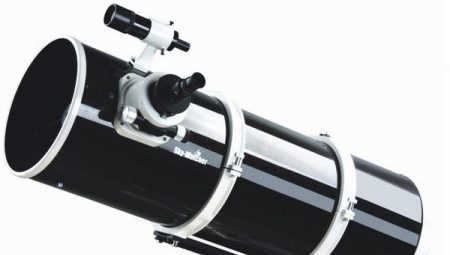
A reflector is a device designed to primarily reflect light. Consequently, a reflector telescope is constructed utilizing this optical phenomenon. Rather than employing a lens, the device utilizes a concave mirror in order to reflect and guide light rays into the eyepiece for the purpose of observing or capturing images. Let us examine the primary distinguishing features of a reflector telescope.
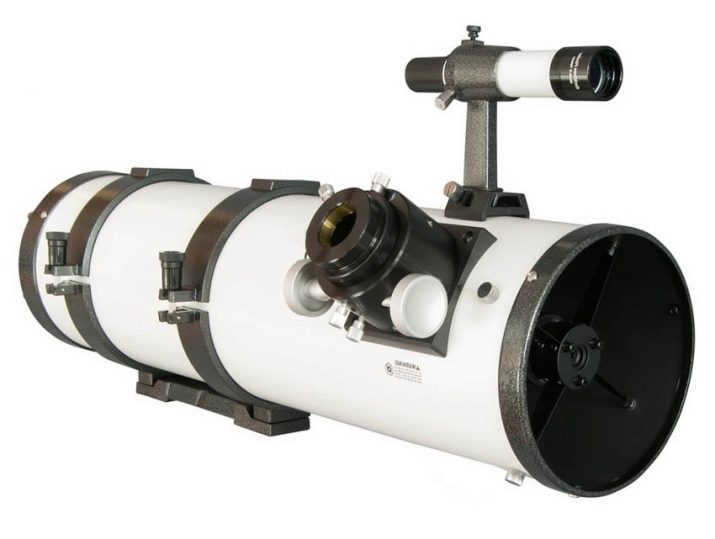
What is it?
Distinguishing a reflector telescope from a refractor telescope is quite straightforward, even without any experience in astronomy. The design of the latter is relatively simple. It consists of a tube, which has a diameter depending on the diameter of the objective lens located at the end facing the observed object. At the opposite end of the tube, there is an eyepiece, which is a lens with a smaller diameter through which the observations are conducted. The length of the tube of such an instrument is determined by the focal length of the lens and the strength of the material from which it can be constructed.
This is, arguably, the main limitation of refractors that restricts their capabilities. It is not feasible to create a high-power instrument due to the significant weight of the structure.
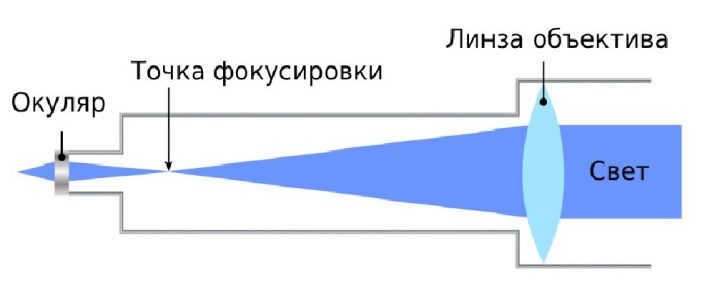
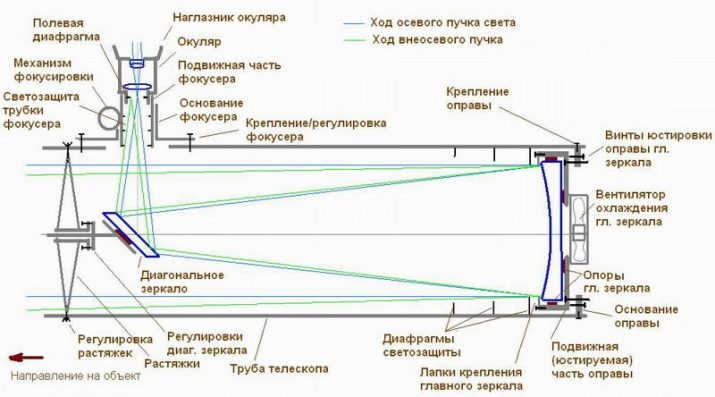
The optical properties of the mirror telescope, as well as its lenticular counterpart, are determined by the capabilities of the lens. In the first scenario, a concave mirror is used, while in the second scenario, a lens is utilized.
Both types of telescopes – refractors and reflectors – are used successfully by amateur astronomers. Each type has its own advantages and disadvantages. Refractors use lenses to refract the light stream, while reflectors use mirrors to reflect the light stream. The curvature of the lens or mirror can vary, leading to different effects on the observed image.
When it comes to portability and mobility, refractors are a better choice. They are built to be more robust and can withstand the rigors of travel. On the other hand, reflectors are less ideal for transportation, as they can easily be misaligned. If the elements of the reflector telescope shift from their proper positions, they will need to be readjusted using screws.
For amateur astronomers who have a fixed observatory, a reflector telescope can be a good option. It can be permanently installed and provide stable and consistent observations.
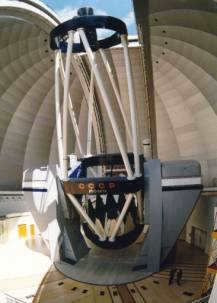
A reflector is an optical telescope that utilizes mirrors to concentrate light. Isaac Newton constructed the first reflector around 1670 as a result of the noticeable chromatic aberration in the refractor telescopes that were previously used.
The majority of modern telescopes are reflectors.
The primary optical systems in reflecting telescopes are
Newtonian System
The Newtonian system, as its name implies, was put forward by Isaac Newton in 1667. In this telescope configuration, a flat diagonal mirror positioned near the focal point redirects the light beam outside the tube, allowing the image to be observed through an eyepiece or captured in a photograph. The primary mirror is typically parabolic, although it can also be spherical if the relative aperture is not too large.
Gregory System: A Unique Telescope Design
The Gregory system introduces an innovative approach to telescope construction. Unlike the traditional Newtonian design, Gregory’s system incorporates a small concave elliptical mirror alongside the main concave parabolic mirror. This secondary mirror reflects the rays from the main mirror into an eyepiece, strategically positioned at the center aperture of the main mirror. The result is a straight image, as opposed to the inverted image produced by Newton’s system.
One of the advantages of the Gregory system is the lengthening of the focal length. This is made possible by the presence of the secondary mirror, allowing for the application of higher magnifications. In essence, Gregory’s design provides astronomers with a unique and versatile tool for observing celestial objects.
The Cassegrain system
The Cassegrain system is a type of optical telescope that uses a combination of mirrors to focus light. It was invented by French astronomer Laurent Cassegrain in the 17th century. The design of the Cassegrain system allows for a compact and efficient telescope that can capture more light than traditional refracting telescopes.
In the Cassegrain system, light enters the telescope through a primary mirror, which reflects it to a secondary mirror located near the top of the telescope. The secondary mirror then reflects the light back down through a hole in the primary mirror, where it is focused to a point. This design allows for a longer focal length and a larger aperture, resulting in a telescope with higher magnification and better image quality.
One of the main advantages of the Cassegrain system is its compact design. The use of mirrors instead of lenses allows for a shorter optical path, making the telescope more portable and easier to transport. Additionally, the Cassegrain system can be used with various types of detectors, including cameras and spectrometers, making it versatile for different types of astronomical observations.
Overall, the Cassegrain system is a popular choice among astronomers due to its high performance and versatility. Its unique design allows for a compact and efficient telescope that can capture more light and produce better quality images. Whether used for stargazing or scientific research, the Cassegrain system continues to be a valuable tool in the field of astronomy.
The System of Herschel (Lomonosov)
In 1616, N. Zucchi put forward a suggestion to replace the lens in a telescope with a concave mirror that is tilted towards the optical axis. A similar type of telescope using a reflector was designed by William Herschel in 1772. In this design, the primary mirror takes on the shape of an off-axis paraboloid and is tilted in such a way that the focus lies outside the main tube of the telescope, ensuring that the incoming light is not obstructed by the observer. This optical arrangement was actually put into practice by Mikhail Lomonosov in 1762, a decade prior to Herschel. One drawback of this system is the presence of significant coma, although it becomes almost imperceptible when the relative aperture is small.
Ritchie-Cretien system
The Ritchie-Cretien system, an enhanced iteration of the Cassegrain system, has gained significant popularity in the realm of reflecting telescopes. This innovative system features a primary mirror with a concave hyperbolic shape, accompanied by a secondary mirror with a convex hyperbolic shape. The eyepiece is conveniently positioned within the central opening of the hyperbolic mirror. Notably, the Ritchie-Cretien system offers a generous field of view of approximately 4 degrees.
Brachytes
Brachytes are optical systems where the secondary mirror is positioned outside the beam that falls on the main mirror. The fabrication of this design can be challenging because it requires the use of off-axis parabolic and hyperbolic mirrors. However, for small aperture and relative aperture, it is possible to use spherical mirrors instead. The primary mirror’s coma and astigmatism are compensated for by the tilts of the secondary mirror. One advantage of brachytes is the absence of shielding, which enhances image clarity and contrast. The concept of brachytes was first introduced in 1877 by I. Forster and C. Fritsch, and since then, various designs have been developed.
The biggest telescopes
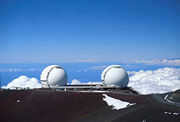
In the field of astronomy, the most significant reflector telescopes currently in existence are the pair of Keck telescopes situated in Hawaii. These telescopes, known as Keck-I and Keck-II, were both commissioned in the 1990s, with Keck-I being completed in 1993 and Keck-II in 1996. Both telescopes boast an impressive effective mirror diameter of 9.8 meters. What makes these telescopes particularly unique is their ability to operate in tandem as an interferometer, providing a resolution equivalent to that of a single mirror with a diameter of 85 meters.
Another notable reflector telescope is the BTA telescope, which holds the title for being the largest telescope in Eurasia. This telescope is situated in the North Caucasus region of Russia, nestled within a mountainous landscape. With a main mirror diameter of 6 meters, the BTA telescope has been in operation since 1976 and previously held the distinction of being the largest telescope in the world for an extended period of time.
Explore more
Recommended reading
Sources
Wikimedia Foundation. 2010.
Helpful
Discover the meaning of “Reflector telescope” in other dictionaries:
Reflector telescope – A type of telescope that uses a mirror as its main light-gathering element… Astronomical Dictionary
Byurakan Observatory – Coordinates… Wikipedia
The Astronomical Association of Carinthia – (German: Astronomische Vereinigung Kärntens) is the second largest astronomical organization in Austria. It was established in 1961. The association owns a planetarium in Klagenfurt and two observatories, the Kreuzbergl Observatory (opened in 1965, located below the… … Wikipedia
The Carinthian Astronomical Union, also known as the Astronomische Vereinigung Kärntens in German, is the second largest astronomical union in Austria. It was established in 1961. The union is in possession of a planetarium located in Klagenfurt, as well as two observatories, namely the Kreuzbergl which utilizes a refractor telescope. More information can be found on their website. According to Wikipedia
Sonnhuette is a hotel situated in Uttendorf, Austria. The hotel’s address is Teglweg 2, 5723 Uttendorf, Austria. For more information and bookings, you can refer to the Hotel Directory
REFLECTOR, derived from the Latin word reflectere meaning to deflect or bend backward, refers to a concave mirror used for reflecting rays and intensifying light. It can also be used as a shell for reflecting heat. This definition is from the Dictionary of Foreign Words that have entered the Russian language, written by Chudinov A.N., 1910.
Medicine is a field that encompasses scientific knowledge and practical activities aimed at promoting and preserving health, prolonging human life, and preventing and treating diseases. The study of medicine involves understanding the structure and function of the human body, as well as developing and applying various medical treatments and interventions. The Medical Encyclopedia provides valuable information and resources for medical professionals and individuals seeking to learn more about health and wellness.
A reflector is a device that uses a concave mirror or system of mirrors to redirect and focus rays of light. It can be found in various applications, such as telescopes and lamps. The use of a reflector allows for the efficient and effective manipulation of light for specific purposes. Ozhegov’s Explanatory Dictionary provides additional information and definitions related to the term “reflector,” further expanding our understanding of this concept.
A mirror telescope, also known as a reflector, is an optical instrument that utilizes a mirror to capture and focus light. The mirror, typically a concave plate coated with a reflective material, is responsible for collecting and redirecting the light. The shape of the mirror can vary, with spherical and parabolic shapes being the most common. Large telescopes often utilize parabolic mirrors to maintain image contrast, as spherical mirrors can cause the light to not converge to a single point. The first reflector telescope was developed by Isaac Newton in the 17th century and is still widely used today in the form of the Newtonian reflector system. While the Newtonian system is the most popular, there are other types of reflecting telescopes that will be discussed later.
The Newton telescope is characterized by its simple structure. It consists of a flat diagonal mirror positioned at a 45-degree angle near the focus. This mirror deflects the light beam upwards. Depending on the relative aperture size, the main mirror can have either a parabolic or spherical shape. Interestingly, the image produced by Newton’s telescope is inverted.
In contrast, the Gregory telescope differs from the Newton telescope in a few key ways. Firstly, it features an elliptical mirror that reflects the light beam into the eyepiece. This eyepiece is located in the center hole of the main mirror. Notably, the elliptical mirror in the Gregory telescope is positioned behind the focus of the main mirror. Consequently, this configuration allows for a direct image to be produced.
In a different design known as the Ritchie-Cretien system, the Cassegrain telescope is modernized with a concave hyperbolic primary mirror and a convex hyperbolic secondary mirror. This configuration allows for the correction of spherical aberration and coma.
Another type of telescope, called the Brachites, features off-axis hyperboloid paraboloid mirrors. The secondary mirror is positioned outside of the beam that is incident on the primary mirror. By tilting the secondary mirror, astigmatism in this design can be compensated for. One notable characteristic of this telescope is that the light beam is not obstructed, resulting in images with excellent sharpness and contrast.
The Mersenne telescope is characterized by the combination of the primary and secondary mirrors’ focal points. Both mirrors are concave parabolic in shape. When light beams hit the main mirror, they converge to its focal point before being intercepted by the secondary mirror, which is positioned behind the focus. The secondary mirror then directs the light beam into the central hole of the main mirror.
Another type of reflector is the Nesmith telescope, which is essentially a modified version of the Cassegrain telescope. This telescope includes an extra flat mirror positioned between the primary and secondary mirrors. This mirror reflects the light beam onto the tube’s wall, eliminating the need for a hole in the primary mirror.
Written by:
Galetich Julia
Date of publication: 17.12.2010
Unauthorized reproduction without a live hyperlink is prohibited
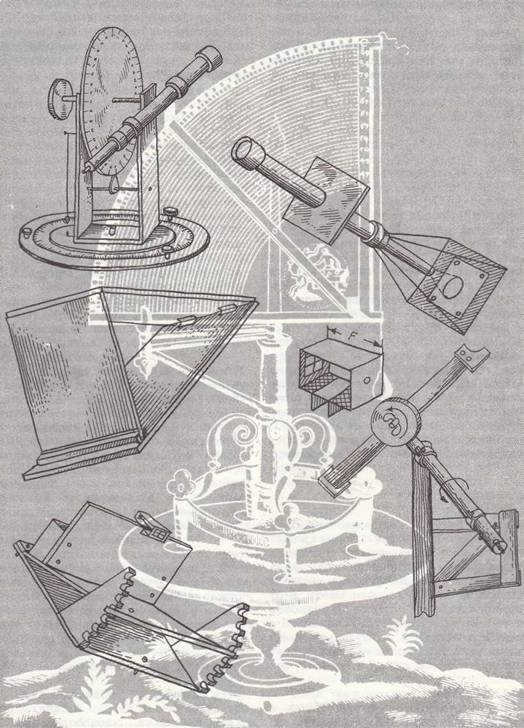
In the field of astronomy, modern astronomical instruments are predominantly used. However, small telescopes for amateur astronomers still serve a valuable purpose by providing a wealth of useful information.
There are two main types of telescopes: refractors, which use lenses, and reflectors, which utilize mirrors.
A basic refractor telescope consists of an objective lens, which is a double-convex lens, and a double-convex eyepiece. The lens collects the rays of light from the observed object and focuses them at a specific point known as the focus. At the focus, a real image of the object is formed. This image is then magnified using the eyepiece.

The path of light in a refractor telescope.
A refractor telescope has two main functions. Firstly, it uses a lens to gather the light emitted by distant celestial objects. The larger the lens, the more light it can collect.
Secondly, it magnifies the image of the object being observed. What does this mean? The focal point of the telescope creates an image of the celestial body, which is much smaller than the actual body. However, since this image is closer to the observer, it can be viewed through the eyepiece at a much larger angle compared to the naked eye view of the actual body.
Therefore, the act of enlarging a telescope – refers to the proportion of the angle at which the image of an object can be observed through the eyepiece compared to the angle at which that object could be seen with the naked eye. To determine the enlargement, it is necessary to be aware of the focal lengths of the objective and eyepiece. The enlargement is equivalent to the ratio of the focal length of the objective lens to the focal length of the eyepiece.
By using different eyepieces, varying enlargements can be achieved. As the enlargement increases, the telescope’s field of view will decrease. At a magnification of 300x, significantly more precise details on the Moon can be observed compared to a magnification of 30x. However, in the former scenario, the telescope’s field of view will encompass a much smaller portion of the lunar surface.
If the object being observed has a noticeable angular size (such as the Sun, Moon, planets, comets, nebulae, or galaxies), a telescope will create an enlarged image, enabling the detection of details that are not visible to the naked eye.
However, when observing stars, this is not the case. Even the closest stars are so far away from us that, when viewed through the largest telescopes mentioned earlier, they still appear as mere dots. Therefore, telescopes do not magnify the apparent size of stars, but they do enhance their apparent brightness significantly.
Furthermore, because the intrinsic sizes of stars are minuscule compared to the vast interstellar distances, telescopes actually increase the apparent distances between stars, making them appear further apart. This allows for the separate observation of stars that would appear as a single point of light to the naked eye.
Modern refractor telescopes rely on highly complex optical systems for their lens lenses. The simple biconvex lens, while commonly used, has significant drawbacks. One major issue is spherical aberration, which causes light rays from celestial luminaries to not converge at a single point. This means that obtaining a clear and sharp image of the observed object, both in the center and at the edges of the field of view, is impossible. If you focus on the center, the edges will be blurry, and vice versa.
It is no coincidence that telescopes with concave mirrors have become the most common in modern astronomy. Isaac Newton designed and constructed the first reflector telescope in 1668.
In a reflector telescope, the focus is located between the lens and the object being observed. To view the image created by the lens, an additional mirror is placed between the main mirror and its focus. This mirror redirects the reflected rays and allows the resulting image to be viewed either to the side or through a hole in the center of the main mirror. In some very large telescopes, like the six-meter telescope, the observer’s cabin is positioned directly inside the tube.

In the field of astronomy, the path of light in a reflector telescope (one of the possible systems) is depicted.
Reflector telescopes do not experience chromatic aberration because the light is not separated when it reflects off the mirror surface. To eliminate spherical aberration, the mirror-lens is shaped as a parabola. A parabolic surface has the unique property of converging all parallel rays to a single focal point along the optical axis.
The distance from the center of the lens to the prime focus is known as the main focal length of the telescope, which is the point where a parallel beam of rays that have passed through the lens objective or reflected by the mirror intersect. The ratio of the diameter of the lens to its main focal length is referred to as the relative aperture of the lens. In photographic cameras, the relative aperture is commonly called the aperture. Lenses with an aperture ranging from 1:2 to 1:6 are classified as fast lenses, as they enable the capture of faint and extended celestial objects such as comets, nebulae, and star fields. The aperture of a typical medium refractor telescope is approximately 1:15.
The capabilities of a telescope are determined by the size of its objective lens. The larger the lens, the more faint stars can be observed. For example, a telescope with an 80 mm lens diameter can detect stars up to the 11th magnitude, while a telescope with a 760 mm lens diameter can detect stars up to the 16.2 magnitude.
In the image on the left (which can be zoomed in), you will observe the attachment of the secondary mirror on four supports within the tube. In this particular scenario, the telescope tube is affixed to an equatorial mount. Two cables with sleek pointing knobs and a counterweight are apparent. The uppermost section of the tube exhibits an eyepiece – meaning that diagonal prisms are not required for observing objects positioned at high angles for reflector telescopes.
Diagram depicting the optical configuration of a Newtonian reflector telescope:
Benefits of Reflecting Telescopes
Refractor telescopes generally lack chromatic aberration due to the absence of lenses (although there may be a slight amount of chromatic aberration in the eyepiece lenses).
It is advisable to select reflector models with a parabolic-shaped primary mirror, as spherical mirrors can introduce spherical distortion (with larger diameter spherical mirrors causing more pronounced distortion).
Interestingly, examining the diagram reveals that the eyepiece in Newtonian telescopes is positioned to the side, allowing for observation of objects closer to the zenith without the need for an additional prism in front of the eyepiece, as required in refractor telescopes.
Comparing prices will show that, for the same cost, reflectors offer a much larger aperture than refractors. This is why Newtonian reflector systems are highly favored by amateur astronomers.
When it comes to reflectors, which are telescopes that use a mirror lens, the most common type is the Newton reflector, which is described in the diagram above.
Other types of purely reflecting telescopes are very rare.
One example is the Brachites, where the secondary mirror is not positioned on the main mirror’s axis, but is instead moved to the side. This design eliminates the central shielding that can reduce image clarity and telescope brightness. However, it seems that Brachites with a suitable aperture are not being manufactured on a large scale.

A reflector is an object that primarily reflects light. So, when it comes to telescopes, a reflector telescope is a type that utilizes this phenomenon. Instead of using a lens, a reflector telescope incorporates a concave mirror in its objective lens. This mirror reflects and directs the incoming light rays onto the eyepiece, allowing for observation or photography of the image. Now, let’s explore the key distinguishing features of a reflector telescope.

What is the reflector telescope?
Distinguishing a reflector telescope from a refractor telescope is quite simple, even for those without experience in astronomy. The design of a reflector telescope is quite straightforward. It consists of a tube, the diameter of which is determined by the diameter of the objective lens located at the end facing the observed object. At the other end of the tube, there is an eyepiece – a lens of smaller diameter that is used for observation. The length of the tube is determined by the focal length of the lens and the strength of the material used to construct it.
This is, perhaps, the main limitation of refractors, which restricts their capabilities. It is not possible to create a high-powered device due to the immense weight of the structure.


The optical properties of a mirror telescope, similar to those of a lenticular telescope, depend on the lens’s abilities. In the case of a concave mirror, and in the case of a lens in the second instance.
Is it really about magnification?
Therefore, the crucial aspect of a telescope’s functionality is not the degree of magnification it provides, but rather its ability to gather sufficient amounts of light. The greater the amount of light that the lens or mirror can gather, the sharper and more detailed the image we desire will be.
In order to produce a high-quality image, the optical system of the telescope must effectively concentrate the incoming light rays onto a single focal point. This point is known as the focus. If the light is not properly focused at this point, the resulting image will appear blurry and indistinct.
What do telescopes look like?
How are telescopes structured? There are several primary types of telescopes:
- Refractors. Refractors only use lenses in their design. They function by refracting light rays;
- Reflectors. Reflectors are made entirely of mirrors. In this case, the telescope’s configuration is as follows: the main mirror serves as the lens, and there is also a secondary mirror;
- Catadioptrics or hybrid type. These telescopes consist of both lenses and mirrors.
Understanding the mechanics of refractors

The lens of a refractor telescope resembles a double-convex lens in appearance. Its function is to collect and concentrate light rays at a single point, known as focusing. The eyepiece is responsible for magnifying the original image. In modern telescope models, complex optical systems are used for the lenses. Relying solely on a single large lens with convex surfaces on both sides can lead to significant errors in the resulting image.
Firstly, the light rays are unable to converge clearly at a single point initially. This is known as spherical aberration, which prevents obtaining a uniformly sharp image. By adjusting the focus, it is possible to increase sharpness in the center of the image, but this will result in blurred edges, and vice versa.
The Functioning Principle of Reflectors
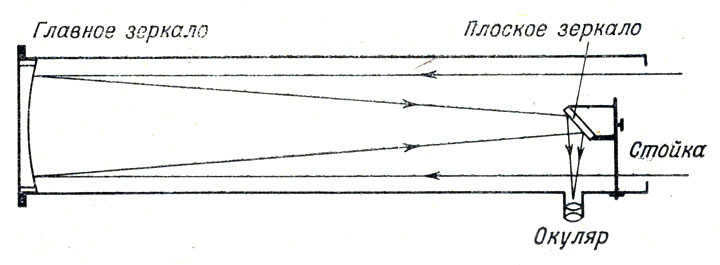
The primary mirror, having a parabolic shape, possesses a unique ability to converge all light rays into a single focal point.
Reflector – An optical instrument employing mirrors as light-collecting elements. Isaac Newton first constructed the reflector telescope around 1670, thereby eliminating the major drawback of refractor telescopes used during that era – considerable chromatic aberration.
The majority of contemporary telescopes are reflectors.
Astronomers in Russia have installed a state-of-the-art Large Alt-Azimuthal Telescope at the prestigious Special Astrophysical Observatory. This cutting-edge technology promises to revolutionize the field of astrophysics and provide valuable insights into the mysteries of the universe.
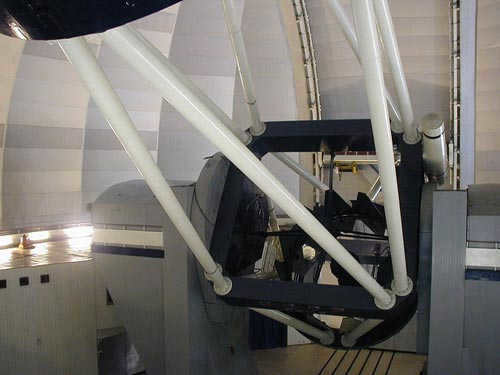

Primary optical systems of reflector telescopes
Newtonian system
Optical arrangement of the Newtonian telescope
Isaac Newton proposed this arrangement of telescopes in 1667, hence the name. In this design, a flat diagonal mirror located near the focal point redirects the light beam outside of the tube, where the image can be observed through an eyepiece or captured in a photograph. The primary mirror is parabolic, although it can also be spherical if the relative aperture is not too large.
Gregory system
The optical arrangement of the Gregory telescope
In the Gregory system, the rays emanating from the primary concave parabolic mirror are directed towards a smaller concave elliptical mirror, which reflects them into an eyepiece positioned in the central aperture of the primary mirror. As the elliptical mirror is situated behind the focal point of the telescope’s primary mirror, the image formed in Gregory’s reflector is undistorted, while in Newton’s system it is inverted. The presence of the secondary mirror increases the focal length, enabling higher magnifications to be achieved.
The Cassegrain configuration
A visual representation of the Cassegrain telescope’s optical layout
The Maksutov-Cassegrain system, developed by the Soviet optician D. D. Maksutov, is a modification of the Cassegrain system. It has gained widespread popularity and is now one of the most frequently used systems in the field of astronomy, particularly in amateur astronomy.
The Herschel (Lomonosov) system
This is the optical diagram of Herschel’s telescope.
In 1616, N. Zucchi proposed a replacement for the lens in the telescope with a concave mirror that is tilted to align with the optical axis. This design was later used by William Herschel in 1772 to create a reflector telescope. Herschel’s telescope featured a primary mirror that had the shape of an off-axis paraboloid and was tilted in such a way that the focus was located outside the main tube of the telescope, allowing the observer to not block the incoming light. Mikhail Lomonosov realized this optical scheme in 1762, 10 years prior to Herschel. One drawback of this design is the presence of a large coma. However, at a small relative aperture, the coma is barely noticeable.
Ritchie-Cretien system
An optical configuration known as the Ritchie-Cretien-Cassegrain telescope has gained popularity in recent times. It serves as an enhanced iteration of the Cassegrain system. The Ritchie-Cretien system features a concave hyperbolic primary mirror and a convex hyperbolic secondary mirror. The central opening of the hyperbolic mirror houses the eyepiece. With a field of view spanning approximately 4°, the Ritchie-Cretien system offers remarkable visual capabilities.
In this arrangement, the secondary mirror is positioned outside the incoming beam that hits the primary mirror. This particular configuration is challenging to manufacture as it necessitates the use of off-axis parabolic and hyperbolic mirrors. However, for smaller apertures and relative apertures, these mirrors can be substituted with spherical mirrors. The primary mirror’s coma and astigmatism are compensated for by adjusting the angles of the secondary mirror. One of the advantages of brachytes is that they don’t require shielding, resulting in improved clarity and contrast of the image. I. Forster and C. Fritsch first implemented this system in 1877, and there are various brachite designs available.
The Biggest Telescopes
At present, the two most massive reflector telescopes in the world are the Keck-I and Keck-II telescopes situated in Hawaii. The Keck-I telescope was put into operation in 1993, while the Keck-II telescope followed suit in 1996. Both telescopes possess an effective mirror diameter of 9.8 meters. Remarkably, these telescopes are situated on the same platform and can be employed in unison as an interferometer, resulting in a resolution equivalent to that of a mirror with a diameter of 85 meters.
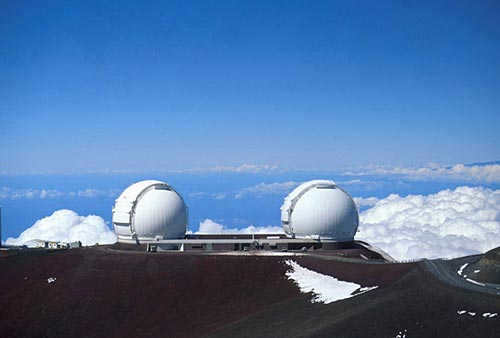
Situated in the North Caucasus mountains of Russia, the BTA telescope holds the distinction of being the largest in Eurasia, boasting a primary mirror diameter of 6 meters. It has been in continuous operation since 1976 and held the title of world’s largest telescope for a significant period of time.
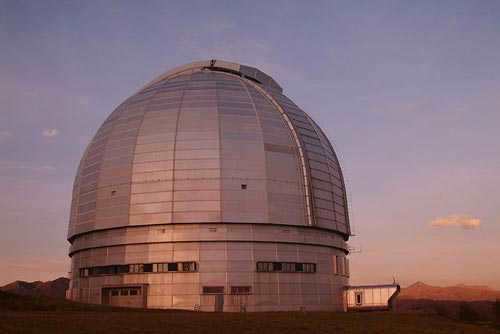
Large Alt-Azimuthal Telescope
The world’s largest telescope made entirely of mirrors is the Large Binocular Telescope, situated in Mount Graham, Arizona, USA. Both mirrors have a diameter of 8.4 meters.
In South Africa, on October 11, 2005, the Southern African Large Telescope was inaugurated. It has a main mirror composed of 91 identical hexagons, with a diameter of 11 x 9.8 meters.
The Gran Telescopio Canarias telescope, located in the Canary Islands, saw its first light on July 13, 2007. It has a mirror diameter of 10.4 meters and is currently the largest optical telescope in the world as of the first half of 2009.

